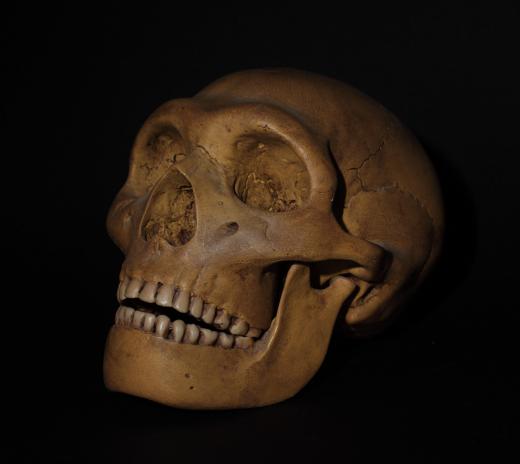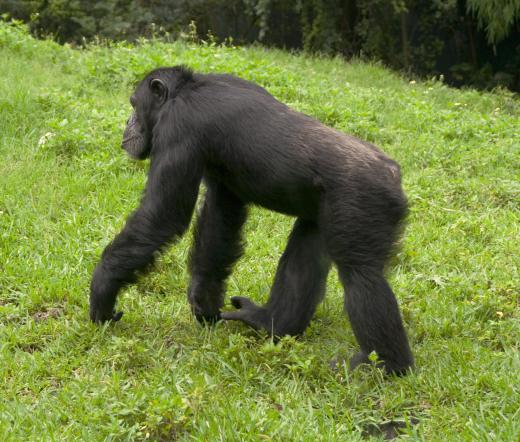What are Transitional Fossils?
 Michael Anissimov
Michael Anissimov
Transitional fossils are the fossils of transitional forms of life representing an evolutionary bridge between two recognized groups. Transitional fossils are among the strongest evidence in favor of Darwin's theory of evolution and natural selection, but they are insufficiently recognized. Many people believe there are more gaps in the transitional fossil record than there actually is. In reality, hundreds of important transitional forms are known.
One of the first obvious transitional fossils is Pikaia gracilens, a simplistic lancelet-like organism found in the Burgess shale (505 million years ago) as well as the Flinders Ranges in Australia (560 million years ago). Pikakia is a transitional fossil between the invertebrates and the vertebrates (Chordata), displaying a primitive notochord, the precursor of a backbone. Pikakia averaged 1 1/2 inches (5 cm) in length, and swam above sea floor, where it likely ate microfauna and food particles. Pikakia fossilizes relatively poorly, with only 60 specimens being found so far.

A later transitional fossil is the lobe-finned fish Tiktaalik, a proto-tetrapod that lived approximately 375 million years ago, during the late Devonian period. The Tiktaalik fins display basic wrist bones and simple fingers, showing they bore weight, and that the animal at least engaged in limited forays onto land. Tiktaalik is considered a transitional fossil between fish and tetrapods. Because it displays characteristics of both, Tiktaalik and similar fossils have been dubbed "fishapods."

Another transitional fossil, one of most famous, is Archaeopteryx, transitional between birds and dinosaurs. Archaeopteryx lived 155–-150 million years ago, during the late Jurassic period. The first complete skeleton was announced in 1862, and the species became a key piece of evidence used to defend the theory of evolution in its infancy. Archaeopteryx could grow to 0.5 m (1.6 ft) in length, and despite its superficial similarity to birds, actually has more in common with small small theropod dinosaurs.
Many transitional fossils between humans and our immediate ancestors, chimps, have been found. Because these species lived relatively recently, only in the past few million years, these fossils tend to be better preserved than those more ancient. Homo habilis and Homo erectus are two common examples of such transitional fossils, and they tell us much about hominid evolution.
AS FEATURED ON:
AS FEATURED ON:












Discussion Comments
Three-dimensional limb joint mobility in the early tetrapod Ichthyostega - look it up, early tetrapods couldn't walk. Just goes to show how far-fetched an evolutionist's inferences are.
Post your comments